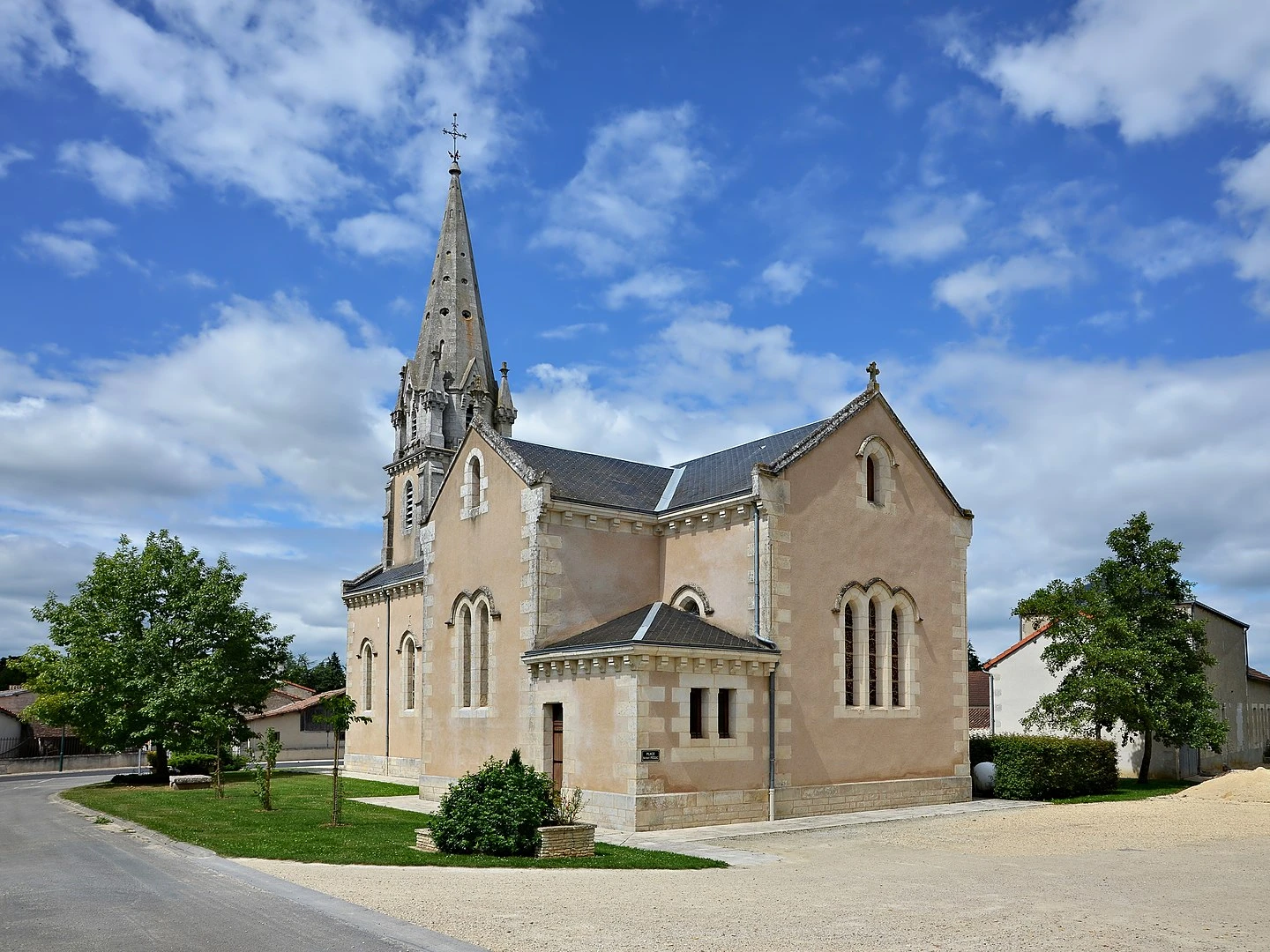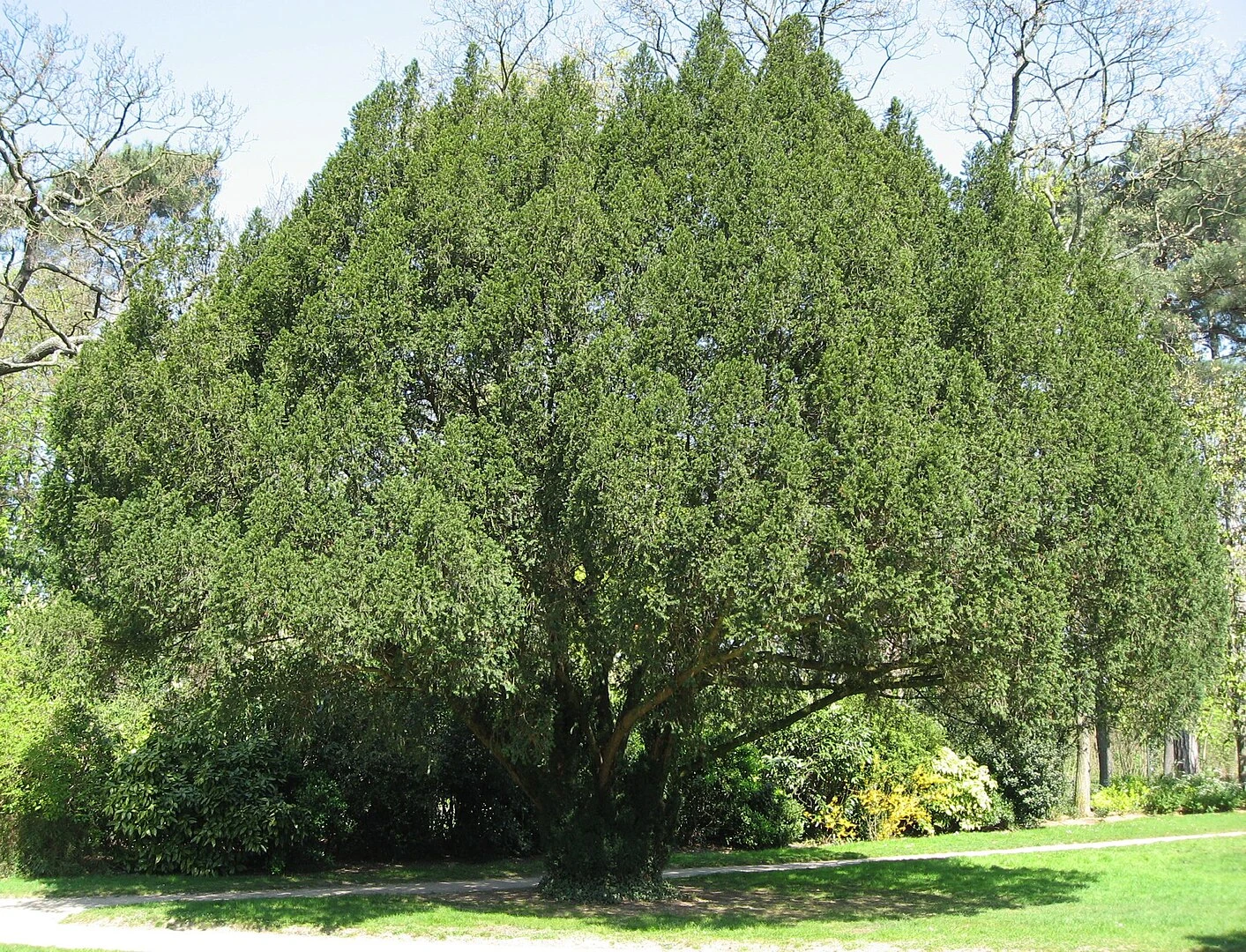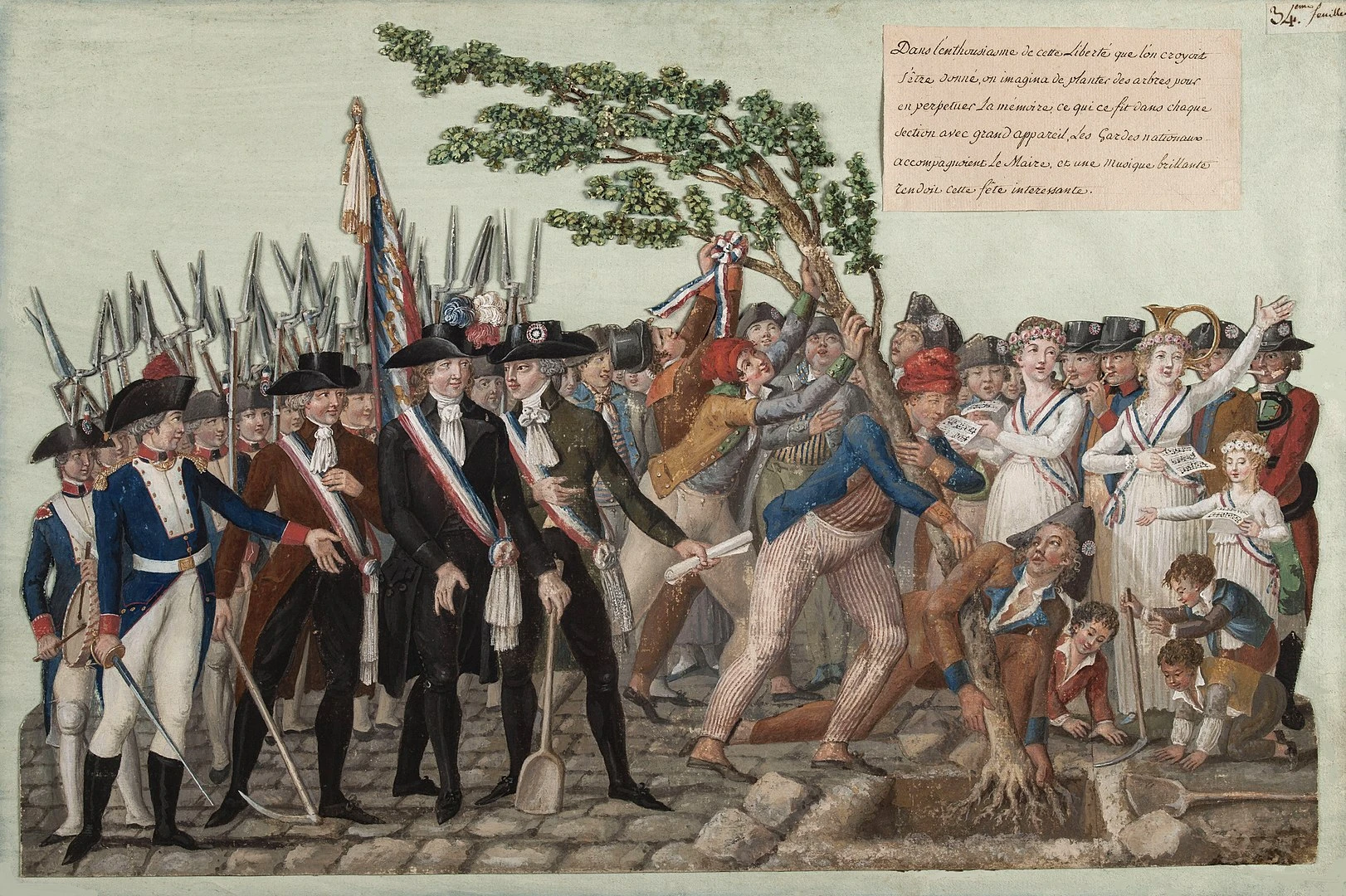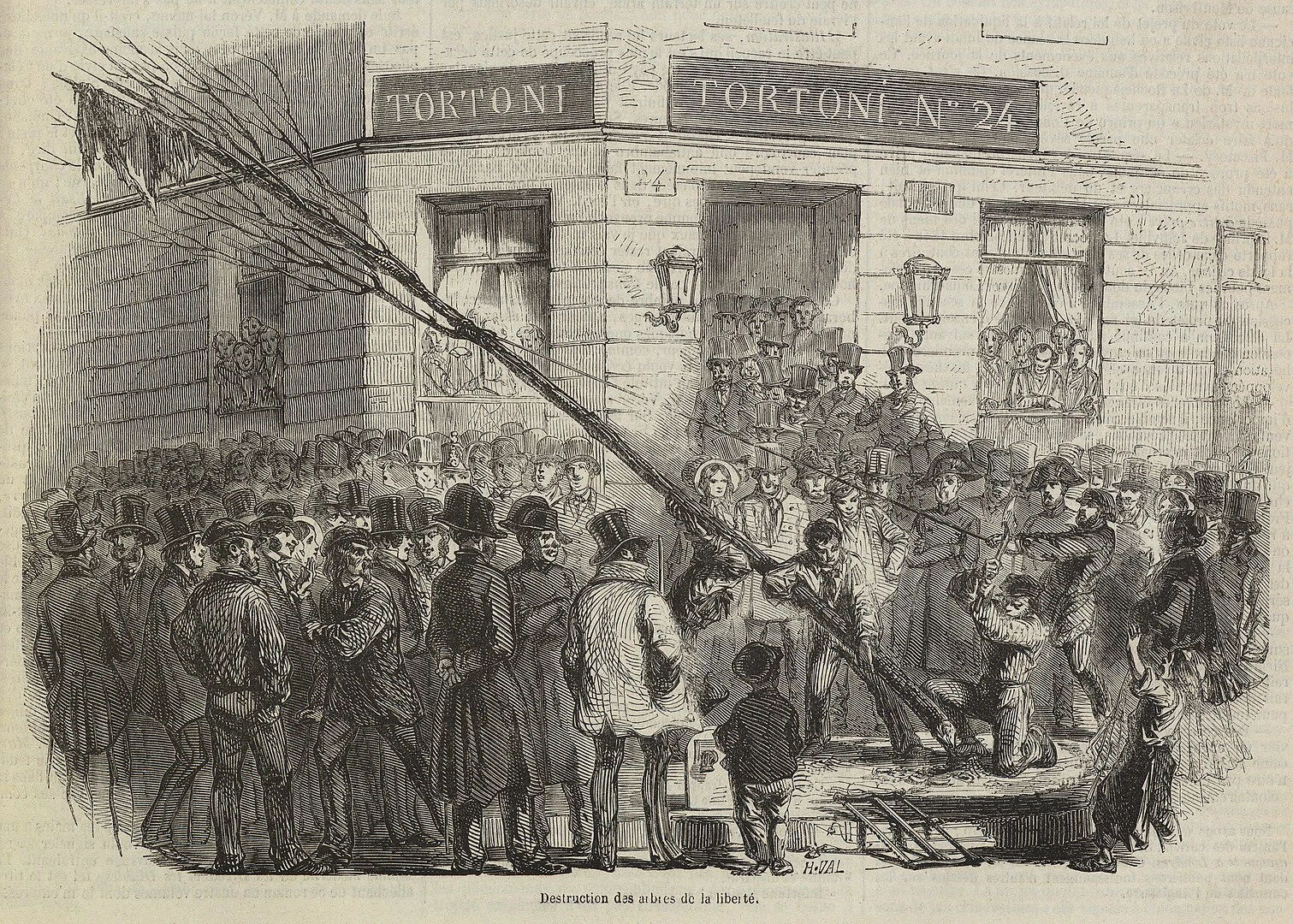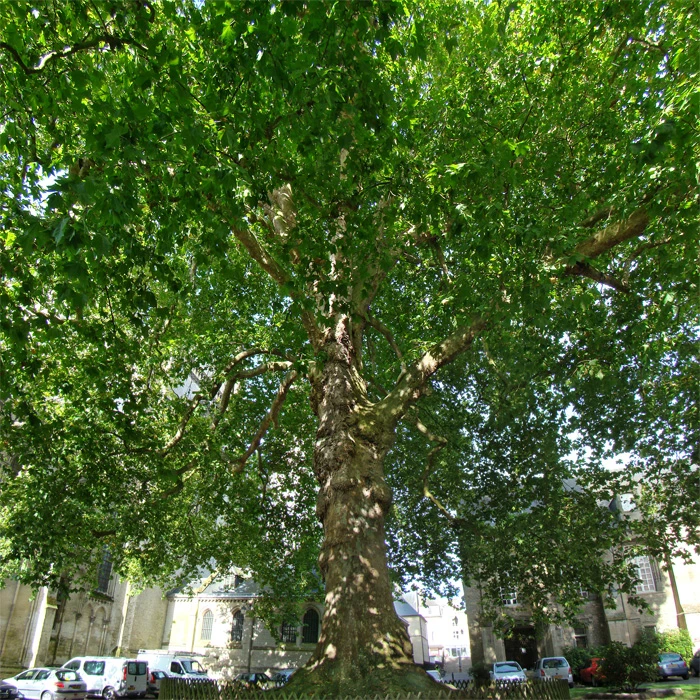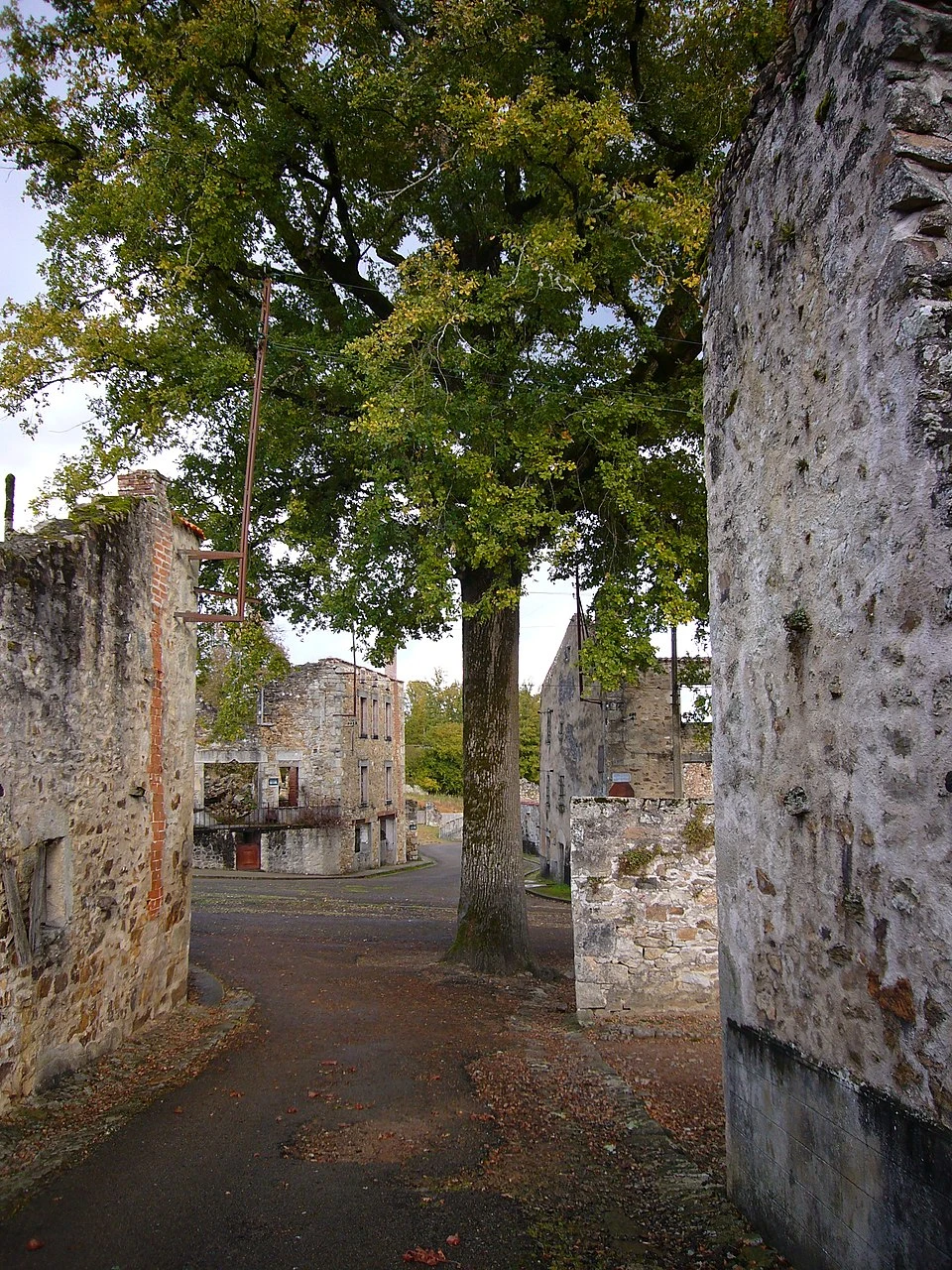Liberty trees planted even before the Revolution:
Saint Gaudent in Vienne / Photo chosen by monsieur de France : By Photo: JLPC / Wikimedia Commons, CC BY-SA 3.0, https://commons.wikimedia.org/w/index.php?curid=27707250v
In 1790, the parish priest of Saint Gaudent, Vienne, decided to plant a tree that would symbolize Liberty. He wasn't the only one with this idea. In Quercy and Périgord, there are also examples of trees planted to honor rising ideals. Even more surprisingly, an aristocrat - a "ci-devant comte" - had anticipated this gesture in the grounds of his château in Franconville. These isolated cases already heralded the union between plant symbolism and the transformation of the political regime. The oak and poplar were about to become the first rooted flag-bearers of the fledgling Republic.
The tree, an ancient and universal symbol
Long before the French Revolution, trees occupied a central place in the collective imagination. The Gauls almost worshipped them, considering certain species sacred. In our cemeteries, the recurring presence of the yew, nicknamed "the tree of the dead", perpetuates a centuries-old tradition. Also, in many regions of France, plantinga "May tree" symbolized the arrival of spring and renewal.The Revolution therefore naturally drew on this symbolic vocabulary to create a tradition that was both popular and political.
The yew tree at the Pré Catelan. Yew is often found in French cemeteries It symbolizes the dead / Photo chosen by monsieur de France: By Liné1 - Picture taken with my IXUS 800 IS, CC BY 2.5, https://commons.wikimedia.org/w/index.php?curid=1943848
Poplars and oaks: trees chosen for the Republic
When the Convention endorsed the planting of Liberty trees in 1792, it recommended poplars. Their rapid growth symbolized the new vitality of the regime. However, other communes opted for oak, a slower-growing tree but synonymous with strength and durability. The botanical choice becomes a declaration of political intent. Alas, nature isn't always cooperative: some trees die, refusing to grow, forcing the inhabitants to start their republican planting all over again. A plant irony that doesn't discourage the convinced.
The planting of a Tree of Liberty in 1792 / Image chosen by Monsieur de France: By Jean-Baptiste Lesueur (1749-1826) - https://www.parismuseescollections.paris.fr/fr/musee-carnavalet/oeuvres/plantation-d-un-arbre-de-la-liberte, Public Domain, https://commons.wikimedia.org/w/index.php?curid=4266237
The fall of the Trees of Liberty at the Restoration of 1815
With the return of the monarchy in 1815, Liberty trees became undesirable. Too closely associated with the Revolution and its values, they were torn down, sawed down and ruthlessly removed in many communes. This monarchist backlash illustrates just how subversive these plantations were perceived to be. The Tree of Liberty became a victim of political revenge, and was often uprooted. But not everywhere!
In 1850, as Napoleon III came to power, trees of Liberty were uprooted / Image chosen by Monsieur de France: By Valentin, Henri, 1820-1855 - This image is available from the Brown University Library under the digital ID 1233676268393531., Public Domain, https://commons.wikimedia.org/w/index.php?curid=24430825
1830 and 1848: the trees of Liberty grow back with the Republic
With each resurgence of the Republic, Liberty trees find their place again. During the revolutions of 1830 and 1848, abolishing the monarchy once again, the French replanted these symbols en masse. Some of these plantations have survived the centuries. In Bayeux, one specimen, at the foot of the cathedral, seems to have defied the test of time, displaying exemplary vitality.
The Tree of Liberty in Bayeux is still standing / Photo chosen by Monsieur de France: By Tango7174 - Own work, CC BY-SA 4.0, https://commons.wikimedia.org/w/index.php?curid=6483682
Oradour-sur-Glane: when the tree becomes sacred memory
Among the trees of Liberty,that of Oradour-sur-Glane is perhaps the most moving. Planted in 1848 by inhabitants happy to see the return of the Republic,it has become a tragic survivor. In the spring of 1944, the SS Das Reich division massacred 642 villagers and destroyed the village. The tree, the only living thing to survive, remained standing. It is no longer just the tree of Liberty: it has become the tree of remembrance. A mute witness to horror, it now embodies the memory of a people and homage to its martyrs. In 1989, in Saint Gaudent, where a Tree of Liberty had been planted in 1790, a new tree was planted by François Mitterand, President of the Republic, on the occasion of the bicentenary of the French Revolution. It's still there;
The Tree of Liberty in Oradour-sur-Glane is still standing, having witnessed the massacre of 642 inhabitants in 1944. / Photo chosen by Monsieur de France: By Babsy - Own work, CC BY 3.0, https://commons.wikimedia.org/w/index.php?curid=3540060
A republican tradition rooted in the French landscape
Liberty trees are more than just temporary decorations or symbols. They are landmarks, markers of time and History. Each tree planted evokes an act of republican faith, a collective dream of justice and freedom. The fact that some of them are still alive today gives them a unique emotional charge. Rooted in the earth as in memory, they continue to remind us of the ideal of the French Revolution: Liberty.

